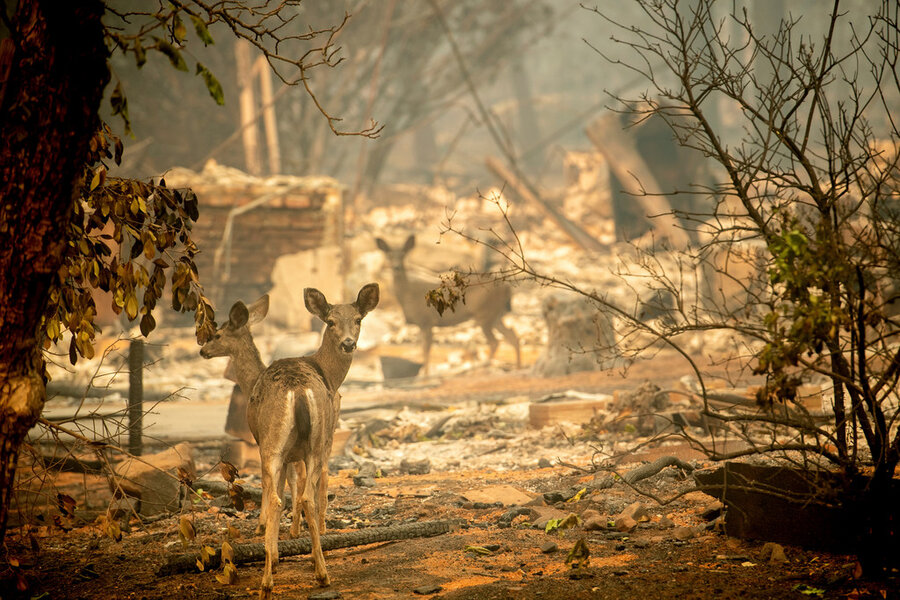California’s fires as both tragedy and lesson
Loading...
Last year, when wildfires in California were already breaking records, Gov. Jerry Brown advised the state to accept it as “the new normal.” This November, as the state saw its most destructive fires in history with dozens of people killed, the governor said the fires are instead “the new abnormal.”
He did not explain his change of terms. Yet the switch nicely wraps up a decades-long debate over whether wildfires are part of a natural order or something to quickly suppress, as Smoky Bear told generations of Americans.
It also hints at the question of whether humans are disrupting that order – such as with climate change – even as they struggle to find a harmonious place in it. Ancient humans may have “discovered” fire. But we moderns have yet to learn to live with it or deal with how we cause it.
Compared with other states, California has done well in dealing with an increase in wildfires and in trying to find a balance between human structures and the grasslands, brush, and trees that are tinder for wildfires. The state, which is the world’s fifth-largest economy, has been a leader in reducing carbon emissions. It requires nonflammable materials in many new houses and a “defensible space” around homes to keep fires at bay. It has tried to use prescribed or “controlled” burns to get rid of dead vegetation, although not as well as in many Southeast states.
Like most states, it has not done as well in preventing the sprawl of homes onto the edges of forest and scrub, or what is called the wildlife-urban interface. The rising proximity of people to combustible lands may be the new normal. Yet isn’t it normal for humans to fit into the natural order of wildfires, which have long been necessary to maintain a resilient and balanced ecosystem?
In wilderness, constant change is the natural order yet humans somehow insist on defining what is good in nature, often demanding wild lands remain the same. As more people build homes near natural settings, the desire for aggressive fire suppression also rises. More government money still goes into fighting forest fires than other aspects of dealing with wildfires, such as zoning or green energy. Nationwide an estimated 46 million homes are in fire-prone areas.
At many levels of governance, there is still no universal consensus on how to deal with wildfires. “All fire strategies suffer failures and at roughly the same rate,” says fire historian Stephen Pyne, a professor at Arizona State University. About 2 to 3 percent of wildfires escape an initial attack by firefighters. A similar number of prescribed fires escape or fail to do the ecological work expected, he adds.
California’s battle with wildfires represents a mix of different strategies designed to both contain fire and live with it. What is normal or abnormal is not yet clear. But somewhere in the struggle lies the ideal of a natural order, with humans as part of it.







